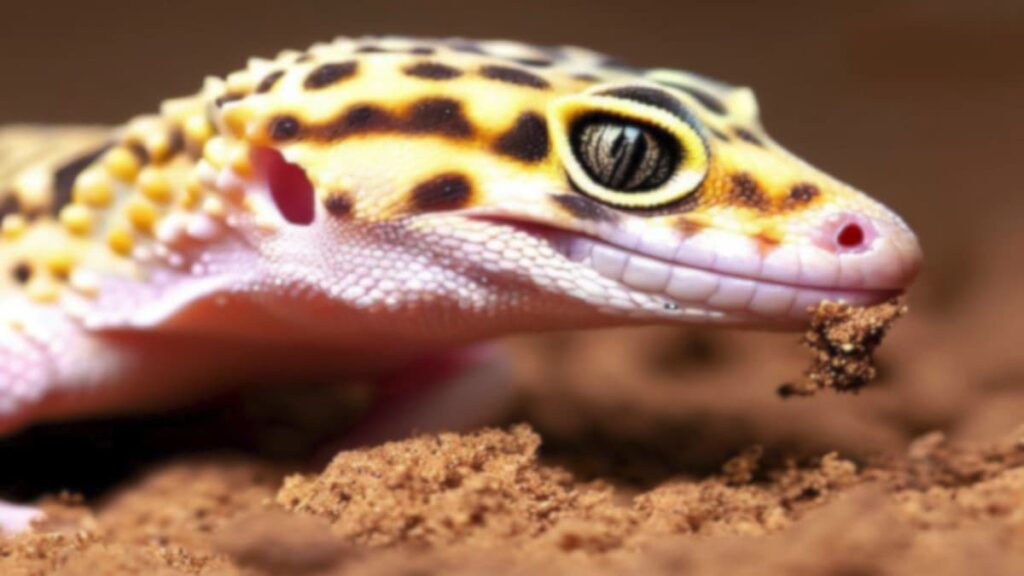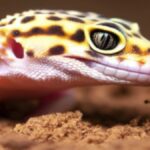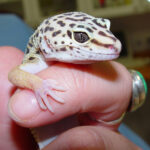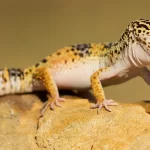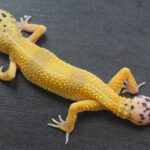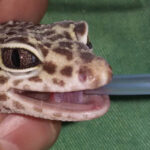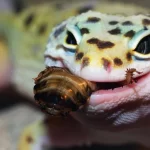One of the most common types of lizards kept as pets in captivity are leopard geckos. With the right care, these gentle, manageable reptiles can live for 10 to 20 years, making them a lifetime companion. Giving leopard geckos a diet high in calcium is essential for supporting healthy bone formation and preventing metabolic bone disease. The importance of calcium in the diet of leopard geckos, symptoms of a calcium shortage, the best sources of calcium, how often and how to supplement, and other dietary factors to keep leopard geckos healthy will all be covered in this article.
The Significance of Calcium
Many of the biological processes of the gecko, including the development of bones and the contraction of muscles, depend on the vital mineral calcium. Because they are unable to generate enough vitamin D3 on their own for calcium absorption, leopard geckos, like all reptiles, need higher amounts of calcium in their diet than mammals. Leopard geckos who do not receive enough calcium from their diets rapidly develop metabolic bone disease, a dangerous condition brought on by mineral deficiencies that can result in weak and deformed bones, paralysis, and even death if treatment is not received. For developing juvenile geckos to have healthy bone growth and for their bones to remain intact throughout adulthood and old age, it is essential to provide a diet rich in calcium.
Calcium Deficiency Symptoms
Leopard geckos exhibiting symptoms of calcium deficiency-related metabolic bone disease need to be given better nutrition and early veterinary care. Weakened bones and muscles, trouble walking or moving, a limp tail or limbs, lumps or edema along the spine or limbs, and convulsions are among the symptoms. The illness results in deformities, total paralysis, and death if treatment is delayed. Reversing advanced metabolic bone disease is a considerably riskier and less successful course of action than prevention with appropriate dietary calcium.
Top Sources of Calcium
Supplemental calcium and feeder insects high in calcium are the greatest calcium sources for leopard geckos. Before being fed outside, feeder insects such as dubia roaches, mealworms, crickets, and waxworms can have their guts stuffed with calcium-rich diets and nutritional powders. The calcium and nutrients inside the feeder bug are absorbed by the gecko as it breaks it down. Oranges, sweet potatoes, collard greens, and commercial gut loading formulae are common feeder insect stomach loading diets. Adding a small amount of pure calcium supplement to feeder insects right before feeding them to geckos also increases their consumption of calcium.
Calcium Supplement Guidelines and Powder
Leopard geckos have high calcium requirements, which can only be satisfied by pure calcium supplements in addition to feeder insects, especially during their early growth stages. The best supplement is calcium carbonate, which is given in the form of a powder that the gecko can eat by sticking it on feeder insects. For growing juveniles under one year old, calcium should be given every one to two feedings. For mature and elderly geckos, the frequency might decrease to two or three times each week. It is sufficient to lightly dust feeders so that the powder is visible but not overly packed on. The gecko shouldn’t have trouble swallowing or coughing while it is eating because of the calcium particles.
Extra Dietary Guidelines
Leopard geckos need calcium, but they also require a balanced diet that includes enough protein and fat, the right amount of phosphorus in relation to calcium, and the right amount of vitamin D3 for calcium absorption. It’s crucial to offer a range of gut-loaded feeder insects in addition to sporadic high-protein feeders like silkworms and hornworms. Nutritious meals of feeder insects also provide vital fatty acids for ailments of the skin and body. It’s also crucial to take a multivitamin supplement containing vitamin D3 1-2 times per week. A diet rich in calcium-rich feeder insects, together with vitamins and other necessary nutrients, will help maintain optimal bone health and stave against metabolic bone disease in leopard geckos.
In summary
For leopard geckos to maintain healthy overall bodies, strong bones, and proper neurological and muscular function, they must consume calcium in their diet. In the absence of appropriate calcium levels, geckos quickly suffer from a crippling metabolic bone disease that causes deformity and ultimately death. Leopard gecko owners can encourage excellent health and avoid expensive veterinary intervention by providing calcium-rich gut-loaded insects at every feeding, administering supplemental calcium supplements one to three times a week, and providing balanced other nutrients, such as vitamin D3. Leopard geckos are wonderful companion pets in captivity for 10–20 years, if they receive the greatest nutrition available. A lifetime relationship between a pet lizard and its owner is ensured by monitoring calcium intake and health. I sincerely hope you find this “Importance of Calcium in the Diet of Leopard Geckos” article helpful.

